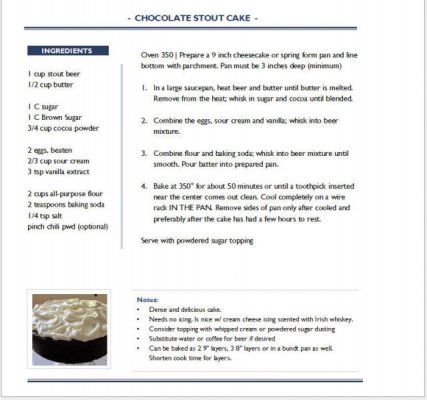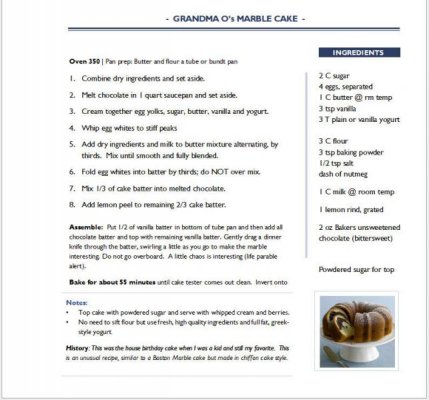I’m writing a cookbook. Several, actually. I’m not promoting it here, but I’d like some input from people who actually read cookbooks, not from bloggers and actual cookbook authors. I’ve read “How to Write a Recipe” in various forms, most of the advice is good, some of it is extraneous, and a lot of it is contradictory.
So what do you like to read, and use? Do you like a conversational style for the recipe, or do you prefer a straight list of ingredients and steps, with the commentary completely separate from the recipe? And what about formats and fonts, if you ever even notice them. If you do notice, which fonts are the easiest to read for you? Do you prefer a fully justified text (so every line is the same length)? Do you like paragraphs indented, with no empty line between them, or do you prefer no idents and an empty break between paragraphs? And the recipes themselves. A numbered bullet list, or un-numbered? And do you prefer the “method” to be a bullet list or in paragraph form? Do you like to see the ingredients in bold when mentioned in the instructions, or is that a distraction?
I know many of you think I’m completely bonkers to worry about these details. “Just write the damned book already!” I hear you cry. But God is in the details, and these seemingly trivial things can impact book sales! So many things to consider, and so many things to distract me! Can you kind folks help me out?
So what do you like to read, and use? Do you like a conversational style for the recipe, or do you prefer a straight list of ingredients and steps, with the commentary completely separate from the recipe? And what about formats and fonts, if you ever even notice them. If you do notice, which fonts are the easiest to read for you? Do you prefer a fully justified text (so every line is the same length)? Do you like paragraphs indented, with no empty line between them, or do you prefer no idents and an empty break between paragraphs? And the recipes themselves. A numbered bullet list, or un-numbered? And do you prefer the “method” to be a bullet list or in paragraph form? Do you like to see the ingredients in bold when mentioned in the instructions, or is that a distraction?
I know many of you think I’m completely bonkers to worry about these details. “Just write the damned book already!” I hear you cry. But God is in the details, and these seemingly trivial things can impact book sales! So many things to consider, and so many things to distract me! Can you kind folks help me out?
Last edited by a moderator:


